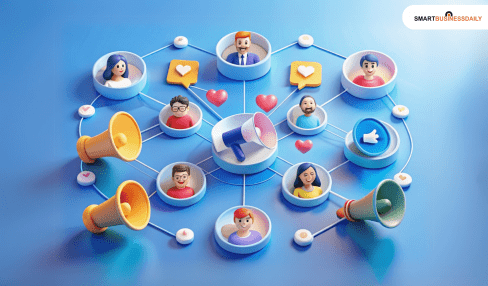Role Of Emotional Intelligence in The Workplace For Smooth Transformation
25 July 2024
6 Mins Read

toc impalement
The business landscape is constantly evolving. Mergers, acquisitions, rapid technological advancements – these are just a few factors that can trigger the need for significant transformation within an organization. However, even the most carefully planned transformation can fail if it neglects the most crucial element – the human factor.
Transformation or change of any kind in the workplace results in a feeling of uncertainty, which can be stressful for employees. This can lead to conflicts and cause delays during transformation, ultimately hindering progress.
However, there is a hidden element that often plays a critical role in ensuring a smoother and more successful transition for everyone involved: Emotional intelligence or EQ. It is more than just keeping your cool in difficult situations. It is actually a powerful set of skills that enables individuals and teams to not only adapt to change but to thrive in the process.
In this article, we will highlight the value of having high emotional intelligence in the workplace. We will explore how strong EQ fosters a more positive and productive environment for everyone involved.
Why is emotional intelligence important in the modern workplace?

Emotional intelligence, or EQ, is a valuable asset in today’s workplace for several reasons. These are as follows:
Stronger Teams and Collaboration
The ability to understand and manage emotions, both your own and others, is essential for effective teamwork. People with high emotional intelligence in the workplace can build rapport with colleagues, actively listen to different perspectives, and navigate conflict constructively. This fosters a more collaborative environment where everyone feels valued and contributes their best work.
Effective Communication
Clear and concise communication is paramount in the modern workplace. Emotionally intelligent individuals can tailor their communication style to different audiences, actively listen to understand rather than just respond, and deliver feedback in a constructive and empathetic way. This leads to fewer misunderstandings, improved decision-making, and a more positive work environment.
Adaptability to Change
Employees with strong emotional intelligence in the workplace can adapt to change more quickly. They are also able to manage stress effectively during transitions and maintain a positive attitude. This is crucial for navigating new technologies, processes, or even company restructurings.
Top Emotional Strategies for Successful Workplace Transformation

Now you know why emotional intelligence in the workplace is an important skill to have. You should go through the top emotional strategies mentioned here for a smooth and successful workplace transformation:
Acknowledge the emotional journey
Change can be stressful. Recognize that employees may experience a range of emotions, from excitement to resistance. Offer resources and support mechanisms to help them navigate these emotions.
Focus on the “why” behind the change
Connect the transformation to a larger purpose or company vision. Help employees understand how the change benefits them and the organization as a whole. This fosters a sense of ownership and purpose.
Open communication is key
Hold regular town halls, Q&A sessions, and open forums to address concerns and provide clear information about the transformation process. This transparency builds trust and reduces fear of the unknown.
In addition to emotional strategies, having an inclusive workspace also plays a crucial role in boosting productivity. We have explored this topic in detail in the section below.
Role of Inclusive Workplace in Boosting Productivity
Digital transformation has created a lot of benefits in the workplace, but the rapid adoption of new technologies can present some unforeseen challenges for facility managers and other fiduciaries.
According to Forbes Magazine1, the War for Talent will continue for the foreseeable future. As a result, employers must create a work environment that matches employees’ needs and addresses concerns, such as job flexibility, authentic leadership, and diversity.
However, accelerated digital transformation can contribute to increased worker stress levels, as employees worry about technology replacing them or not being able to adapt to/learn to work with XR tools.
A recent article by the IFMA2 reinforces these concerns, “Environmental changes affect how people focus, behave, and interact. Leaders often lack strategies for managing these shifts. Many real estate advisors and facility managers focus on physical space while overlooking psychological and emotional needs. These strategy gaps leave employees resistant and teams unprepared for backlash. This delays progress, contributes to missed deadlines, and influences office use and satisfaction.”
To better prepare workers, facility managers (FMs) can utilize the workplace’s forgotten strategy, the Emotional Punch List.
What Is an Emotional Punch List?
A construction project punch list typically contains all the items that require additional contractor attention to satisfy the owner or tenant. The list is compiled as the architect, tenant/owner, and general contractor walk the project from end to end, looking for final work items that must be completed or corrected before the space is occupied.
Every subcontractor receives a copy and must address the items pertaining to their original scope of work. Since the tenant is ready to move in, most punch lists include a strict completion timeline.
An emotional punch list works similarly but utilizes worker input to create a list of unforeseen challenges or hurdles. This tool can track progress, monitor emotions, and pinpoint where people get stuck. As these issues are discussed openly, employers and FMs can become more proactive with planning, rollout schedules, and changes to established processes.
How to Develop an Emotional Punch List
Every business has unique needs, so there is no standardized template. Since employees respond subconsciously to their work environment, these lists must focus on the challenges your associates and coworkers face.
Sharing these fears and concerns leads to improved workspace utilization and design choices. There are three steps to creating an emotional punch list for your team, company, or tenant.
Use Employee Input to Validate Proposed Design Changes
Most design and planning teams are comprised of architects, designers, vendors, and company executives, not the employees who will use the space the most. Employee input can reveal false assumptions the design team makes, allowing these errors to be corrected during the planning and design process.
It’s important to note that employee validation does not mean designing to individual specifications. This validation is used to create a shared vision for the project, which can increase buy-in while reducing worker stress.
Expand Awareness
The common assumption is that everyone performs their work similarly. This is generally not the case, especially with the increased number of remote and hybrid workers over the last five years.
Exploring and discussing different perspectives shows how difficult creating an inclusive workspace is. By organizing this information, leaders often discover employee concerns and suggestions that would be completely overlooked.
Develop Capacity
The assembled data provides a starting point for addressing employee concerns, but it’s not enough to completely overcome potential emotional hurdles during change. The revised design must include workable solutions, such as flexible infrastructure systems that quickly adapt and change to address future changes, such as new technologies and evolving worker preferences.
For example, a flexible, raised access flooring system that provides quick and easy access to data and power cables can reduce future construction costs by moving the data cables to a more accessible location under the finished modular floor covering. As changes or updates are needed, they can be performed without the cost and inconvenience of traditional construction, dramatically reducing worker anxiety and stress.
The Gridd Power® option, manufactured by FreeAxez, further enhances future flexibility by incorporating an integrated 50-amp modular bus system within the access flooring system to replace obsolete power cabling. This increased flexibility allows minor changes to be made within a few hours, while a complete reconfiguration can be completed in days or weeks instead of taking months with traditional cabling systems.
Workplace design should involve more than door and furniture placement. Adopting the emotional punch list model has been shown to have a positive impact on:
- The talent a company attracts and retains
- Internal and external business relationships
- Community perception of the space and company
- Returns for investors
- The planet
Final Thoughts
FMs should carefully consider all of the involved factors, not just the technology requirements of an accelerated digital transformation project. A holistic approach to space design provides superior results when the relationship between people and spaces is examined in greater detail.
Employees get attached more easily to a new workspace when their ideas and concerns are collected, addressed, and supported through the emotional punch list process. This will help workers reduce stress and anxiety while improving attendance, job satisfaction, and productivity.
Read More…


















Comments Are Closed For This Article